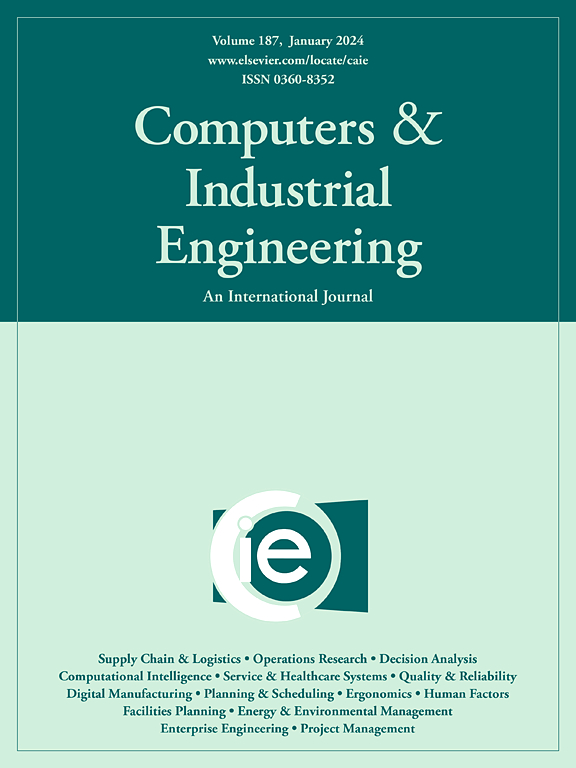A human digital twin approach for fatigue-aware task planning in human-robot collaborative assembly
IF 6.7
1区 工程技术
Q1 COMPUTER SCIENCE, INTERDISCIPLINARY APPLICATIONS
引用次数: 0
Abstract
Human-robot collaboration (HRC) has emerged as a pivotal paradigm in manufacturing, integrating the strengths of both human and robot capabilities. Neglecting human physical fatigue may adversely affect worker health and, in extreme cases, may lead to musculoskeletal disorders. However, human fatigue has rarely been considered for decision-making in HRC manufacturing systems. Integrating adaptive decision-making to optimise human fatigue in HRC manufacturing systems is crucial. Nonetheless, real-time perception and estimation of human fatigue and decision-making informed by human fatigue face considerable challenges. To address these challenges, this paper introduces a human digital twin method, a bidirectional communication system for physical fatigue assessment and reduction in human-robot collaborative assembly tasks. The methodology encompasses an IK-BiLSTM-AM-based surrogate model, which consists of inverse kinematics analysis (IK), bidirectional long short-term memory (BiLSTM), and attention mechanism (AM), for real-time muscle force estimation integrated with a muscle force-fatigue model for muscle fatigue assessment. An And-Or graph and optimisation model-based HRC task planner is also developed to alleviate physical fatigue via task allocation. The efficacy of this approach has been validated through proof-of-concept assembly experiments involving multiple subjects. The results show that the IK-BiLSTM-AM model achieves a minimum of 8 % greater accuracy in muscle force estimation than the baseline methods. The 12-subject assessment results indicate that the task planner effectively reduces the physical fatigue of workers while performing collaborative assembly tasks.
求助全文
约1分钟内获得全文
求助全文
来源期刊

Computers & Industrial Engineering
工程技术-工程:工业
CiteScore
12.70
自引率
12.70%
发文量
794
审稿时长
10.6 months
期刊介绍:
Computers & Industrial Engineering (CAIE) is dedicated to researchers, educators, and practitioners in industrial engineering and related fields. Pioneering the integration of computers in research, education, and practice, industrial engineering has evolved to make computers and electronic communication integral to its domain. CAIE publishes original contributions focusing on the development of novel computerized methodologies to address industrial engineering problems. It also highlights the applications of these methodologies to issues within the broader industrial engineering and associated communities. The journal actively encourages submissions that push the boundaries of fundamental theories and concepts in industrial engineering techniques.
 求助内容:
求助内容: 应助结果提醒方式:
应助结果提醒方式:


